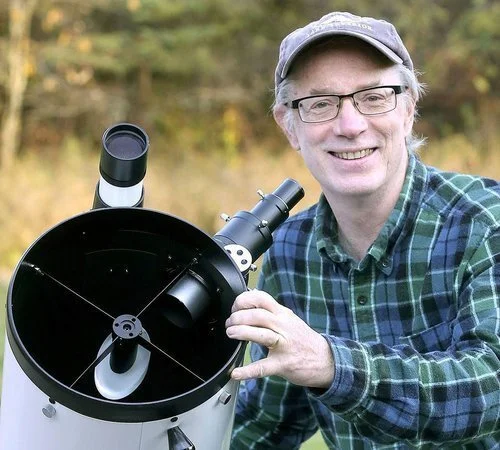January 2024 Night Sky Calendar
Hello new year! Orion with its twin gems Betelgeuse and Rigel is once again the centerpiece of the winter sky, joined by the season’s other luminaries — Capella, Aldebaran, Sirius, Procyon and Pollux. Jupiter will be there, too. The largest planet still has eye-pulling power even as it shifts from the eastern to the western sky this month.
Highlights during the year’s coldest month include a well-timed meteor shower for North America, an occultation of the bright star Antares by the morning moon for observers in the West and Midwest and a favorable appearance of Mercury at dawn. Bundle up, pop some handwarmers into your mittens and enjoy the show!
Events (a.m. indicates the event happens in the dawn sky):
Jan. 2 – Earth reaches its closest point to the sun called perihelion at 7 p.m. CST. On this day we are about 3 million miles closer to the sun than in early July. The reason for the changing distance? Earth orbits the sun in an ellipse, not a circle.
Jan. 3 (a.m.) – Last quarter moon. Look for it tipped on side in the southwestern sky after sunrise around 8-9 a.m. local time
Jan. 4 (a.m.) – Annual Quadrantid meteor shower which has a narrow peak of only about 6 hours. Fortunately, this year that peak occurs around 3 a.m. CST when the shower radiant is well- placed in the northeastern sky below the handle of the Big Dipper. Face north or northwest with the moon at your back. Views will be best from about 2 a.m. to 6 a.m. local time when from 60 to 120 meteors per hours might be seen. Note that light from the last quarter moon will reduce that tally.
Jan. 5 (a.m.) – Approximate date of the latest sunrise.
Jan. 8 (a.m.) – The waning crescent moon shines below Venus low in the southeastern sky at dawn. Around sunrise for Midwest observers and during morning twilight for locations farther west, the crescent’s bright edge will cover or “occult” the bright star Antares. You’ll need binoculars to see it best. For details, please check my Facebook page at facebook.com/astrobobking.
Jan. 8-22 – Mercury joins Venus at dawn. Look for the innermost planet a fist and a half to the lower left of Venus 45 minutes to an hour before sunrise low in the southeastern sky.
Jan. 9 (a.m.) – Razor-thin crescent moon shines about 7 degrees to the lower right of Mercury about 45 minutes to an hour before sunrise very low in the southeastern sky.
Jan. 11 – New moon. The moon will be too close to the sun to see.
Jan. 13 – Waxing crescent moon appears 8 degrees below Saturn during the early evening hours in the southwestern sky.
Jan. 17 – First quarter moon. Moon shines due south around sunset and sets around midnight. Look for jazzy Jupiter to the left of the moon.
Jan. 18 – Waxing gibbous moon gleams 3.5 degrees to the upper left of Jupiter.
Jan. 25 – The Full Wolf moon rises around sunset in Cancer the Crab in the northeastern sky and shines all night. Find your local moonrise time at www.timeanddate.com/moon
Jan. 27 – Close but challenging conjunction of Mercury and Mars. Mars is just entering the morning sky and Mercury is on its way out. They pass just one-quarter degree from each other very low in the southeastern sky about one outstretched fist to the lower left of Venus. Use binoculars and look around 40 minutes before sunrise. Mercury is the brighter planet at magnitude −0.2, while Mars shines weakly at 1.3.
Bob King is an amateur astronomer, author, and passionate educator. He served as a photographer and photo editor at the Duluth News Tribune for 39 years and taught at the UMD planetarium. Bob’s work had a great impact on Voyageurs National Park. To achieve International Dark Sky Park certification, the park was required to host dark sky education events. Through the Night Sky Explorer webinars, the Conservancy was able to fulfill this component and help secure the certification for Voyageurs National Park. We can’t thank Bob King enough for sharing his talents and knowledge with the Conservancy community to support dark sky preservation.






